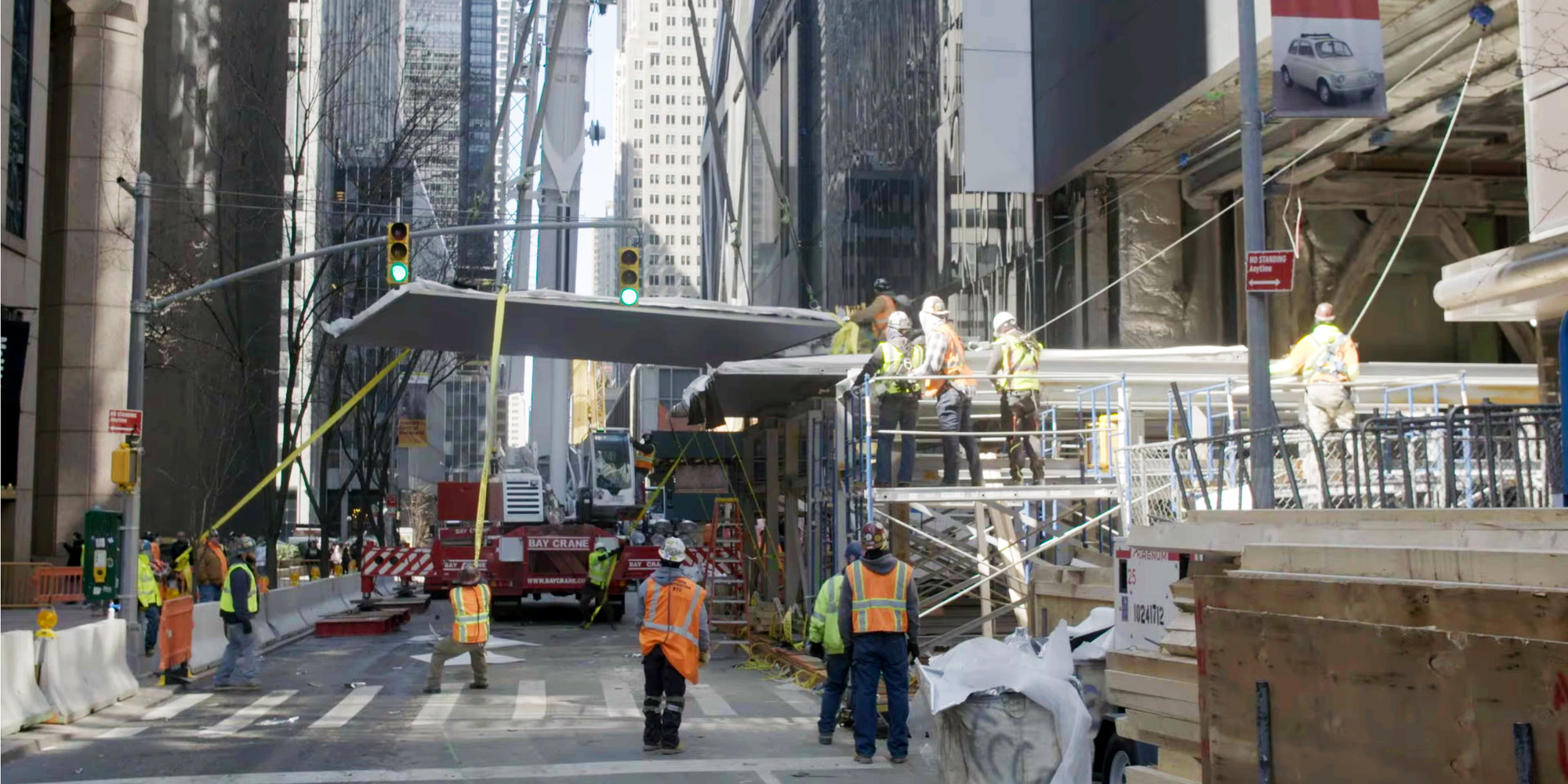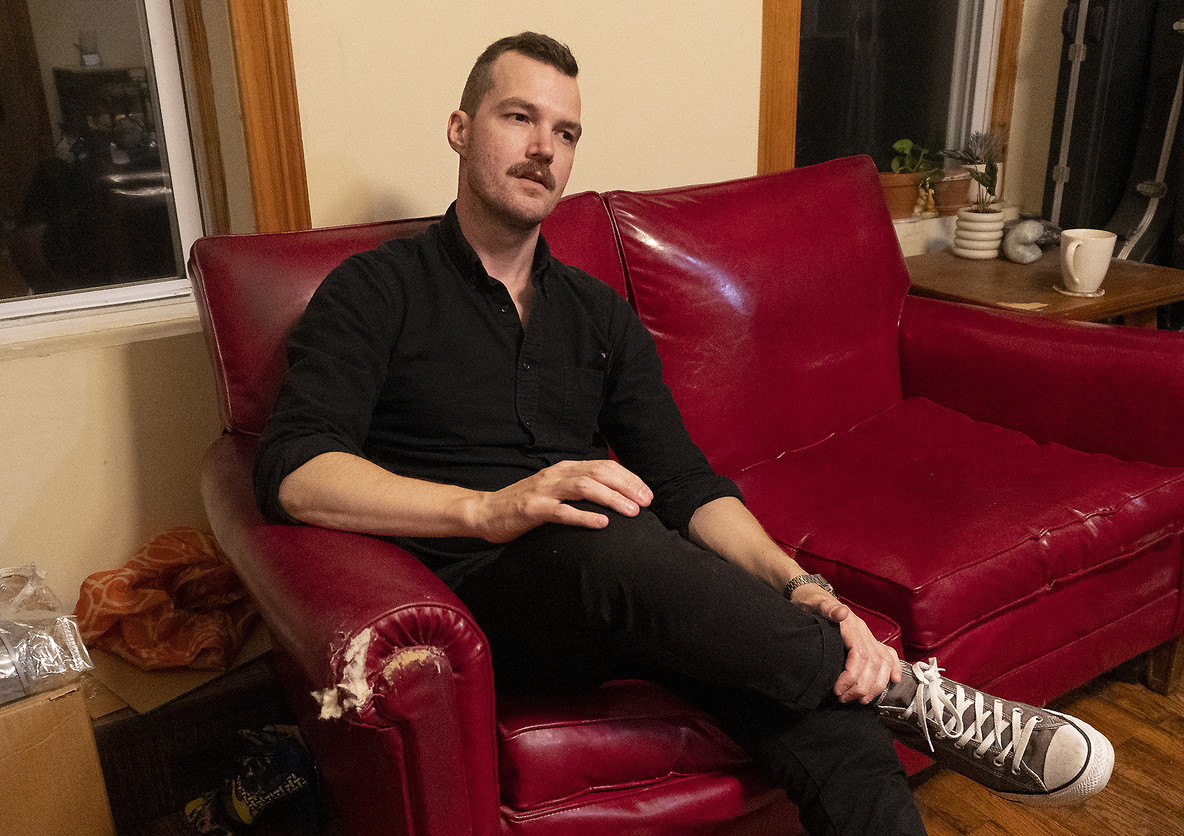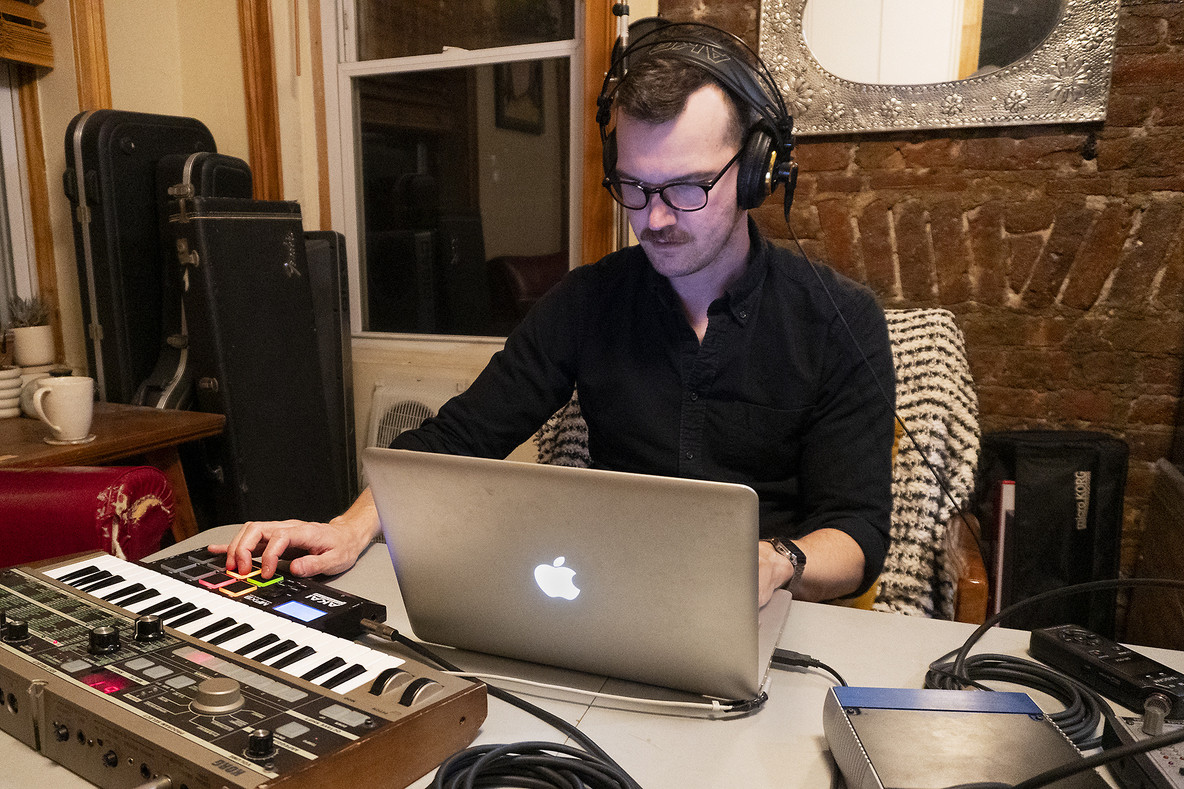
Constructing Music with Jason Anthony Harris
A musician transforms background noise into something new.
MoMA
Oct 9, 2019
As a guest specialist at MoMA, Jason Anthony Harris had a front row seat this summer to the sights and sounds of the Museum’s transformation. The whirr of a crane, a truck blaring a warning that it’s in reverse, concrete breaking under the force of a jackhammer—for many New Yorkers, this is the incessant background noise of the city. For Harris, these sounds are the building blocks of his next composition.
Known outside of MoMA under the moniker Public Speaking, Harris has built music from organic items like wood and leaves. The sounds of construction coupled with the empty spaces during temporary closure offered Harris the chance to create something new. He says, “The sounds of this process happening around the Museum were permeating my days, and I could not help but find a kind of violent lushness in their textural complexity.” Inspired, he roamed MoMA’s campus to capture audio samples of various machines and turn them into music. He recently shared his work Material, Place, and Process with us and detailed his process.

Jason Anthony Harris. Photo: Derek Rush
Tell us a little bit about this piece.
Material, Place, and Process was created from field recordings and samples I took around the Museum during the closure, while it was under heavy construction. I captured the sounds of hammers, nail guns, shovels, and other equipment. Many of the louder, more violent sounds are accompanied by a thick reverb that resonated up through the atrium. I also sampled the everyday, mundane noises of the building, like stairway and bathroom doors, freight elevators, and various metal hand-rails. Without visitors around, during the less intense construction, I could more effectively record these smaller sounds. I cut up and arranged all of this on the laptop, organizing the material into rhythmic, sometimes tonal pieces that I present here as a sort of montage. Some of the sounds are heavily altered. Others are presented naturally, almost as field recordings. A few sounds were more musical, like the caution-beeps of a crane, and these were pitch-shifted and used as a sort of organ.
What inspired you to create it?
I have been reading and thinking a lot lately about the stages of human development: from roving hunter-gatherers to agrarian settlements, to empires, and on to the Scientific and Industrial revolutions. I believe we’re all taking a new, critical look at our species’ relationship to the planet and the consequences of our civilization. As humans, we want to create. Building new things often necessitates some degree of destruction, whether it is removing elements completely or reshaping them into new forms. The sounds of this process happening around the Museum were permeating my days, and I could not help but find a kind of violent lushness in their textural complexity.
For me, the sounds of construction equipment can convey our potential for both demolition and regeneration.
Jason Harris
What is it about construction equipment that drew you to its sounds?
My last Public Speaking album, Six Golden Tumors, was made with mostly primal sounds from wood and leaves. I also used a lot of organ and violin, instruments that can connote a world hundreds of years ago. The music I’m composing and the songs I’m writing now are more concerned with the present: a world dominated and constructed by mighty mechanical processes and no-less-formidable digital technologies. We still live on as a thriving species, but we are finally facing the dire environmental byproducts of our actions. Still, there are so many activists, artists, and everyday people who want to build a more loving, sustainable Earth. For me, the sounds of construction equipment can convey both of these things: our potential for both demolition and regeneration.
When did you start making your own music?
Probably from the moment I learned my second chord. I always wanted to write new music. I was very worried about being influenced by other peoples’ songs. I thought the point of learning to play an instrument was to communicate something of one’s own, something special and singular. It took me a very long time to get there, but that was always the goal. I may play several instruments, but it’s all in the service of songwriting.
Have you always used “natural” or “found” sounds to make music?
When I was in high school I taught myself to play guitar and piano with the help of a little chord book. I wrote songs and played in bands for a few years until I came to a kind of skill plateau. Then I studied with pianist Ed Pastorini, a student of jazz artist Lenny Tristano. We worked on music theory and ear-training, and it was the most essential, invigorating process of my musical life. Once my ear was more adept, I began to incorporate the sounds of objects and electronically processed voice and instrumentation into my music. This is when I took on the moniker Public Speaking. The more I used non-musical sources, the hungrier I became for finding, recording, and transforming the sounds of the world around me. I keep a portable digital recorder with me 99 percent of the time now.

Jason Anthony Harris. Photo: Derek Rush
Does this music make you see the Museum or its collection in a different way?
When I move around the building now, I think that I can more intimately hear the space. I hear it as malleable material. I try to move through the world like this in general, but when one has already taken and arranged audio from an environment, a bond remains. When I was naming it, I kept thinking about action words, and Richard Serra’s work Verb List came to mind, which happens to be in MoMA’s collection. When reading about it, I saw his quote about “material, place, and process,” and that finally brought the piece together for me; it is a series of processes. I’ve been diving into Serra’s work in the Museum Archives, and learning more about his career and philosophies. It is already influencing the music and lyrics I am writing.
What do you feel when you listen to this piece, and what do you hope others feel when they listen?
Since many of the sounds are still very identifiable for me, it depends on the context. If I am not in the building, it kind of takes me there, and I see myself moving through long, mostly empty hallways with the construction echoing throughout the Museum. I’ve listened to it a couple times while I was actually in the building, and it felt like the walls and entire corridors were calling out and singing in a way. I hope that it evokes movement and restructuring space. Breaking and rebuilding materials is a fascinating process to me, and even though this is an instrumental piece made with completely non-musical sound, it makes me think about all the hands and bodies that operated this machinery, that moved these walls around—both for the current expansion, and even going back to the Museum’s first exhibition here.



